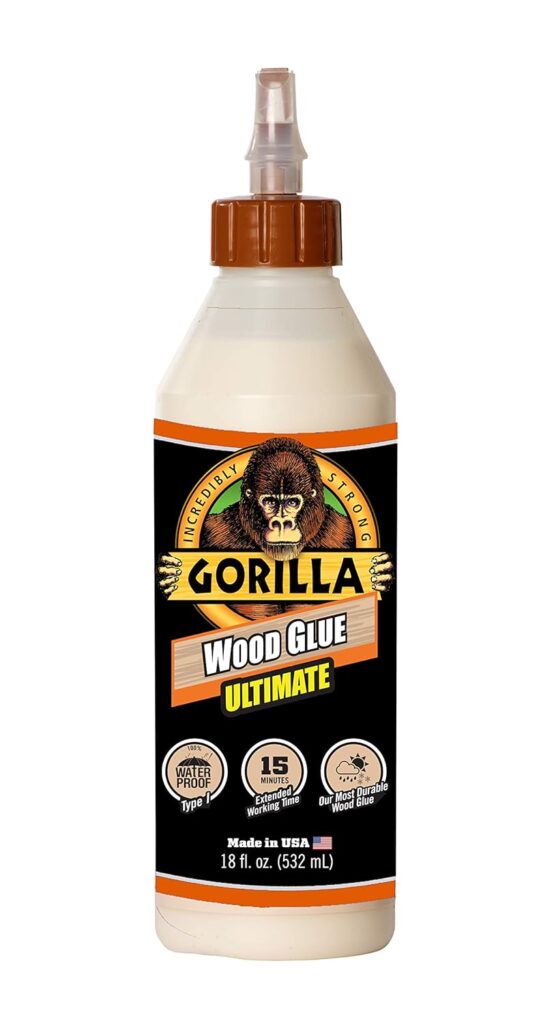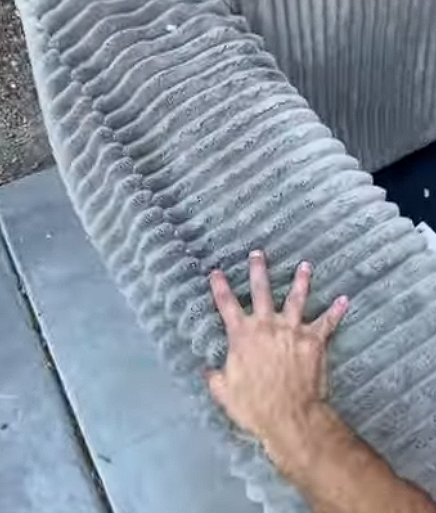Understanding the Common Issue of Wobbly Chair Frames
Wobbly chair frames are a frequent problem that most furniture owners encounter at some point. Over time, everyday wear and tear, loose joints, or worn-out screws can weaken the structure of a chair, causing it to become unstable.
The wobbling not only affects comfort but also poses a risk to both the user and the chair itself.
Why It's Important to Repair a Wobbly Chair
If left unrepaired, the problem can worsen, leading to more severe damage or even making the chair unusable.
Repairing a wobbly chair is essential to maintaining its integrity, preventing accidents, and prolonging its lifespan. Even minor issues like a loose joint can escalate into larger structural problems if not addressed promptly.
The good news is that many of these repairs can be done at home with basic tools and a little patience.
This guide will walk you through simple DIY steps to fix wobbly chair frames and restore them to their original stability.
Essential Tools and Materials for Repairing Wobbly Chair Frames
Common Tools You’ll Need
When repairing wobbly chair frames, having the right tools is crucial to achieving a stable and lasting fix.
Some of the most common tools include a screwdriver (both flathead and Phillips), wood glue for securing loose joints, clamps to hold parts in place while the glue dries, and sandpaper to smooth rough surfaces after repairs.
These basic tools are generally sufficient for most chair repairs and are easy to find in any hardware store or home toolbox.
Materials Required for the Repair
In addition to tools, you’ll need specific materials to ensure a solid repair.
Wood filler is useful for patching up small cracks or gaps, while new screws and wooden dowels can help reinforce loose joints or replace old, worn-out hardware. These materials help fortify the structure of the chair and make it more durable.
Having a range of screw sizes on hand can ensure you match the original screws or improve upon them for better stability.
Optional Items for Advanced Fixes
For more advanced repairs, you may want to use items like corner braces, which provide extra support for weakened joints, or a carpenter’s square, which ensures that the chair’s frame remains properly aligned during the repair process.
These additional reinforcements can significantly extend the lifespan of the chair, making it sturdier than ever.
While these items aren’t always necessary for every repair, they can be beneficial for severely damaged chairs or those that need extra support.
Identifying the Cause of a Wobbly Chair Frame
Inspecting the Chair Frame Thoroughly
Before jumping into repairs, it’s essential to thoroughly inspect the chair to pinpoint the exact cause of the wobble.
Start by flipping the chair upside down and examining every joint, screw, and connection.
Gently wiggle different parts of the chair to identify which sections are loose or unstable.
This careful inspection helps ensure that you address all underlying issues, not just the obvious ones.
Identifying Specific Trouble Spots
Common trouble areas include loose screws, cracked wood, and weakened joints. Screws may become stripped over time, resulting in a loose fit, while joints glued together in older chairs can weaken and come apart.
Pay close attention to any visible damage like splintering or separation in the joints, which can indicate deeper structural issues.
Knowing exactly where the wobble is originating from will help you target your repair efforts effectively.
The Importance of Checking the Entire Frame
It’s important to check the entire chair frame, even if you think you’ve already found the source of the wobble.
Sometimes, multiple weak points contribute to the problem, and addressing just one area won’t completely stabilize the chair.
Thoroughly examining each connection point and joint ensures that hidden issues, such as hairline cracks or unnoticed loosened components, are caught and repaired, preventing future wobbling and keeping the chair structurally sound.
How to Tighten Screws and Bolts on a Wobbly Chair Frame
Locating and Tightening Loose Screws or Bolts
Loose screws and bolts are a common cause of wobbly chair frames, and fixing them can often stabilize the chair quickly.
Start by locating the screws or bolts that hold the chair frame together.
You can usually find them at the joints, beneath the seat, or along the legs.
Use the appropriate screwdriver or wrench to tighten these fasteners, ensuring they are snug but not overtightened, which can strip the wood or metal.
Replacing or Reinforcing Stripped Screws
If you discover that some screws are stripped and no longer hold the chair securely, replacing or reinforcing them is necessary.
One effective DIY method is to insert wooden dowels or toothpicks dipped in wood glue into the stripped hole.
Let the glue dry before screwing in the fastener again.
This technique helps the screw grip better, preventing it from loosening over time.
Choosing the Right Size and Type of Screws
When replacing screws, it’s crucial to select the right size and type for the chair.
Using screws that are too short or thin can result in a poor fit, while screws that are too long may protrude through the wood, causing damage.
Opt for wood screws with a diameter and length that match the original hardware, or slightly thicker screws if reinforcement is needed. T
his ensures a secure and durable fix that will last.
The best option is to take out one of the screws and drive to a local hardware store and match the screw.
How to Repair Loose Joints on a Wobbly Chair Frame
Applying Wood Glue to Loose Joints
Loose joints are one of the most common reasons for a wobbly chair.
To fix them, start by carefully separating the loose joint enough to apply wood glue into the gap.
Use a small brush or a glue bottle with a fine tip to spread the glue evenly within the joint, ensuring it reaches deep inside the crevices.
Wipe off any excess glue with a damp cloth to keep the chair looking clean and polished.
Using Clamps to Secure the Joint While the Glue Dries
Once the glue is applied, it’s important to hold the joint securely in place while it dries.
Using clamps is the best way to ensure the joint stays tightly bonded.
Place the clamps around the area and gently tighten them, ensuring the parts remain aligned. Keep the chair clamped for at least 24 hours to allow the glue to fully cure and provide a strong bond.
If clamps aren’t available, heavy objects or weights can also work as a temporary substitute.
Reinforcing the Joint with Screws or Wooden Dowels
For added durability, especially in high-stress areas like chair legs or arms, you can reinforce the joint with screws or wooden dowels.
If using screws, pre-drill pilot holes to avoid splitting the wood, and choose screws long enough to penetrate both parts of the joint.
Wooden dowels, secured with glue, can also provide extra stability. This added reinforcement ensures the joint will hold up under pressure and last for years to come.
Fixing Cracked or Broken Frame Pieces on a Wobbly Chair
Assessing the Extent of Damage
Before attempting any repairs, it’s important to assess the severity of the cracks or breaks in the chair’s frame.
Inspect the damaged areas closely to determine whether the crack is superficial or if it has compromised the structural integrity of the chair.
Small surface cracks may be easy to fix, while larger breaks or splinters could require more extensive repairs.
Understanding the extent of the damage helps you decide the best course of action, whether it’s a quick patch or a full replacement of the broken part.
Using Wood Glue or Wood Filler for Minor Cracks
For minor cracks that don’t affect the chair’s overall stability, wood glue or wood filler can be an effective fix.
If the crack is small, apply wood glue into the crack, then clamp the piece together until the glue dries.
For surface-level cracks or gaps, wood filler works well to patch up the area. Sand the filler once it’s dried to create a smooth surface.
Both methods are ideal for cosmetic or small-scale damage and can quickly restore the chair’s appearance and functionality.
Replacing Broken Pieces with New Wood
In cases where a piece of the frame is too damaged to repair, it may be necessary to replace it with a new piece of wood.
To do this, carefully measure the broken section and cut a new piece from the same type of wood to match. Sand the edges and fit the new piece securely in place using wood glue and screws for extra reinforcement.
Ensure the new piece is properly aligned with the rest of the frame to maintain the chair’s structural balance.
Replacing damaged parts can give the chair new life and restore its stability.
Adding Reinforcements to Strengthen Wobbly Chair Frames
Installing Corner Braces for Extra Support
Corner braces are a simple yet effective way to reinforce a chair’s frame and prevent future wobbling.
To install them, place the brace inside the corner where two parts of the chair meet, such as at the joints between the legs and seat.
Secure the brace with screws, making sure it fits snugly against both surfaces.
These braces provide extra support to areas that tend to weaken over time, especially under heavy use, and help distribute weight more evenly, making the chair sturdier.
Using Metal L-Brackets or Additional Screws for Extra Strength
Metal L-brackets can be used in place of or in addition to corner braces, particularly in high-stress areas like chair legs. They offer even more strength due to their rigid construction. Install them by positioning the bracket at the joint and securing it with screws.
If the frame is especially fragile or prone to wobbling, consider adding extra screws along key connection points to ensure that all parts of the chair are firmly held together.
This reinforcement strategy is ideal for chairs that have experienced significant wear or need added durability to withstand regular use.
Sanding and Finishing a Repaired Chair Frame
Sanding the Repaired Areas for a Smooth Finish
After completing repairs on a wobbly chair, the next step is to sand the affected areas to ensure a smooth and professional finish.
Start by using medium-grit sandpaper (around 120-150 grit) to gently sand down any rough patches, dried glue, or filler that may be left over from the repairs. Once the surface feels even, switch to a finer-grit sandpaper (220 grit or higher) to achieve a smooth, polished look.
Be sure to sand in the direction of the wood grain to avoid scratches and maintain a clean, natural finish.
Applying Finishing Touches: Stain, Paint, or Varnish
With the sanding complete, it’s time to restore the chair’s appearance with finishing touches.
If the chair has a natural wood finish, consider applying a wood stain to match the original color and enhance the wood grain.
For painted chairs, select a matching paint and apply evenly with a brush or spray.
Finally, protect your work by applying a clear varnish or polyurethane coat.
This not only seals the wood but also adds a layer of durability, ensuring the chair remains sturdy and attractive for years to come.
Whether you choose stain, paint, or varnish, these finishing touches will help make the chair look as good as new.
Restoring Stability to Your Chair
Recap of Key Steps in Repairing a Wobbly Chair Frame
In this guide, we’ve explored the essential steps to repair a wobbly chair frame, ensuring it regains its stability and functionality.
We began by identifying the cause of the wobble, followed by tightening loose screws and repairing any loose joints.
Next, we addressed cracked or broken frame pieces, added reinforcements like corner braces and L-brackets, and concluded with sanding and finishing to restore the chair’s appearance.
By following these steps, you can effectively tackle most common issues that contribute to a wobbly chair.
Time to Repair Your Chair!
Now that you have the tools and knowledge needed, it’s time to take action and repair any wobbly chairs in your home.
Don’t wait until minor issues escalate into major problems that could lead to further damage or even accidents.
Taking the initiative to fix your chairs not only improves their stability but also enhances your overall comfort and safety.
Whether it’s a cherished family heirloom or a modern piece, giving your chairs the attention they need will ensure they remain functional and enjoyable.
Importance of Regular Maintenance
Lastly, regular maintenance is key to preventing future wobbling and extending the lifespan of your chairs.
Periodically inspect your furniture for loose screws, damaged joints, or signs of wear. Addressing these issues early on can save you time and effort in the long run, keeping your chairs in top condition.
By incorporating simple checks into your routine, you’ll ensure that your furniture remains not only beautiful but also safe and sturdy for years to come.
























